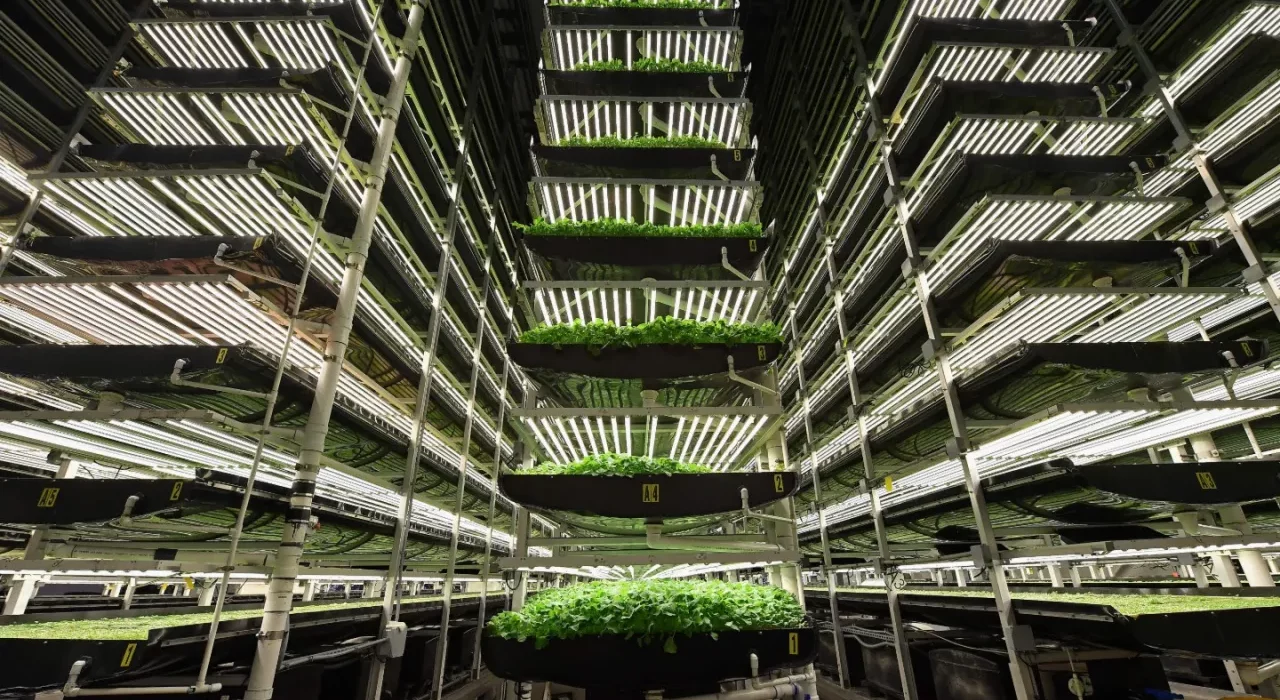In an era where global population growth is accompanied by an escalating demand for food production, traditional agricultural practices face significant challenges. The industry is responsible for over 6.4 billion tons of greenhouse gases annually, contributing to 8.5% of the world’s yearly emissions. With factors such as climate change, limited water access, inconsistent weather patterns, and poor soil quality impacting food production, innovative solutions are crucial. One such solution that has gained traction is vertical farming a subcategory of Controlled Environment Agriculture (CEA) that holds the potential to revolutionize the future of sustainable agriculture.
Historical Roots
Vertical farming, although considered a contemporary concept, has deep historical roots. The Babylonians, nearly 2,500 years ago, pioneered the idea of vertical gardens, creating the earliest form of this innovative agricultural practice. Centuries later, the Aztecs introduced hydroponics, growing crops without soil by suspending plants in nutrient-rich solutions. In the 1600s, European farmers utilized vertical farming techniques with fruit walls to maintain thermal comfort, enabling the cultivation of crops in diverse climates.
Contemporary Vertical Farming
Fast forward to the present day, and vertical farming has undergone a remarkable transformation into a technologically advanced practice falling under the umbrella of Controlled Environment Agriculture (CEA). Indoor farms leverage cutting-edge technologies such as LED lights, closed-loop water systems, and soilless cultivation methods like hydroponics, aeroponics, and aquaponics. These technological advancements eliminate the need for pesticides, reduce water consumption by up to 90%, and optimize plant growth, allowing for year-round, rapid-cycle production.
Pros of Vertical Farming
Vertical farming presents an array of advantages that position it as a sustainable agricultural paradigm. One of its key strengths is its efficiency in spatial utilization. Vertical systems can fit an astounding 280 hectares (700 acres) of agricultural space into an area equivalent to that of a supermarket (about 2,000 square meters or 21,000 square feet). This represents a mere 0.02% of the space required for the same amount of produce using traditional methods.
In contrast to traditional agricultural practices, which often result in water overconsumption and waste, vertical farming is remarkably water-efficient. Approximately 70% of easily accessible freshwater is used for agriculture, a practice that vertical farming significantly mitigates. Indoor farming methods can use up to 90% less water, and much of this water can be recirculated in irrigation systems, minimizing waste.
Another noteworthy advantage of Controlled Environment Agriculture systems is their ability to optimize plant growth, allowing for consistent year-round production of various crops. The absence of seasonal constraints means that crops can be grown and harvested consistently, contributing to a stable and reliable food supply. Moreover, the optimization of crops enables shortened growth cycles, with some crops completing their entire growth in as little as 10 days. This rapid turnover proves to be not only cost-effective but can result in a staggering 700% yield increase compared to traditional agriculture, depending on the crop.
The strategic location of vertical farms in urban areas, coupled with advanced technologies, translates into cost savings. The proximity of these farms to urban centers reduces the need for extensive transportation to deliver fresh produce to retail sites. This not only lowers transportation-related emissions but also reduces labor costs due to optimized growing conditions and technological advances.
Cons and Challenges
While vertical farming offers immense promise, it is not without its challenges. High initial costs, excessive energy use, and significant carbon emissions are primary concerns. The energy required to power photosynthetic light from LED lamps is a major factor, exemplified by the carbon dioxide emissions associated with growing a single head of lettuce. For instance, the energy required for growing 4,000 heads of lettuce is equivalent to the annual emissions of a passenger car.
Furthermore, not all crops are equally suited for vertical farming. While small plants like leafy greens and strawberries are efficiently grown, cereal crops such as wheat and corn pose stacking and lighting challenges, making them less practical for vertical farming. The economic implications are significant, with the potential cost of producing a loaf of bread from vertically farmed wheat estimated at around $23, solely to power the required LED lights.
The Road Ahead
In September 2022, the Association for Vertical Farming (AVF) introduced VertiFarm, marking a significant milestone in the industry. This international trade show, held in Dortmund, Germany, featured over 70 stalls from 17 countries, providing a platform to showcase innovations in cultivation-related methods and products. VertiFarm addressed crucial issues faced by the vertical farming industry, including crop failures, produce supply, and urban sustainability.
As we approach a global population of 10 billion by 2050, the need for a 70% increase in food production becomes increasingly urgent. Traditional agricultural methods, hindered by climate change-induced factors, struggle to meet these demands. The anticipated rise in vertical farming by almost 25% by 2026 signals a growing interest in sustainable agricultural practices.
Conclusion
In the face of mounting challenges posed by climate change, population growth, and the limitations of traditional agriculture, vertical farming emerges as a beacon of hope. While it may not replace conventional farming immediately, its potential to revolutionize food production is undeniable. By adopting and adapting methods with a lower carbon footprint, we pave the way for a more sustainable and efficient agricultural future. Vertical farming stands at the forefront, offering a glimpse into a world where human food demands align harmoniously with the needs of our planet.

